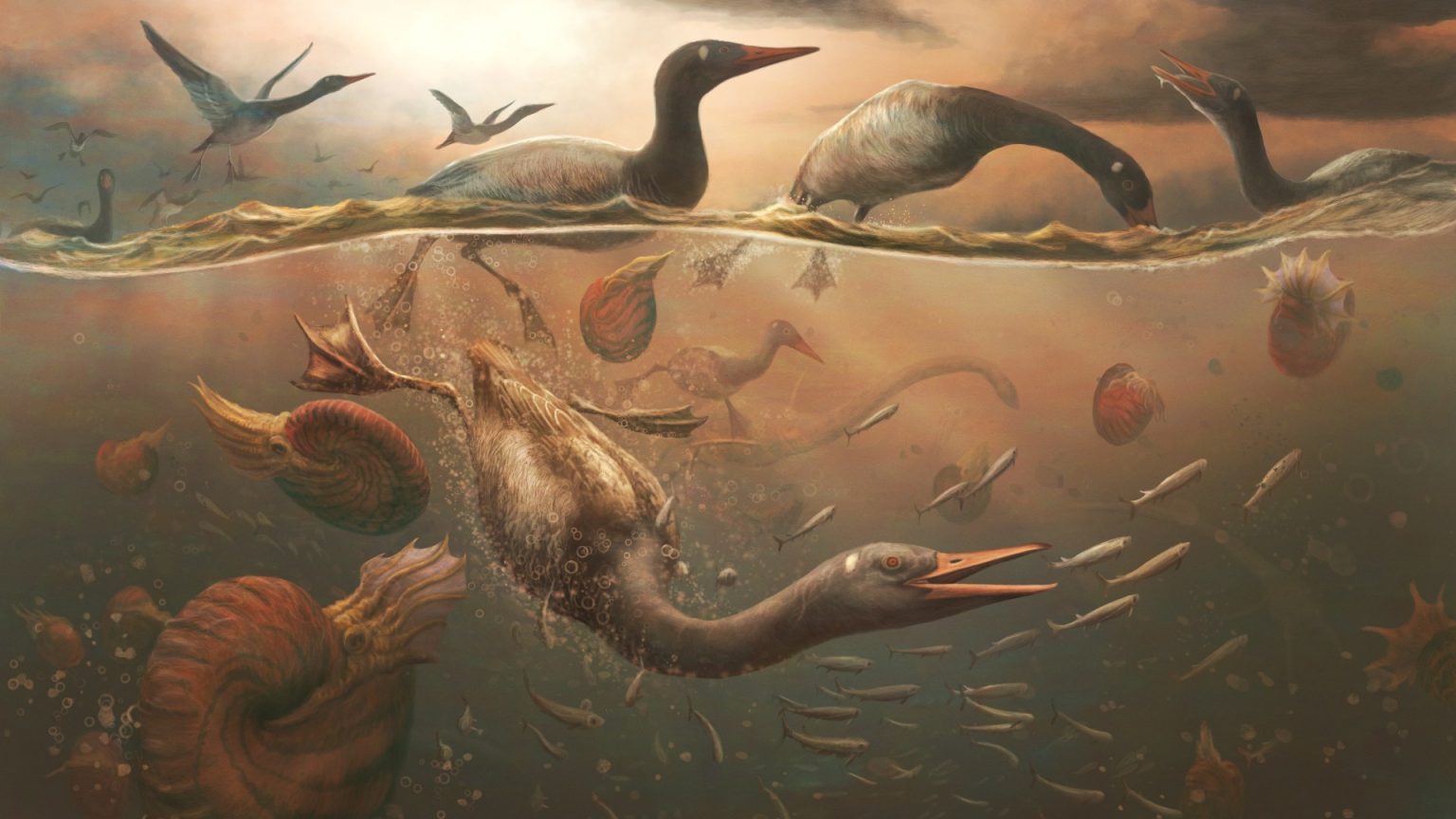The discovery of a near-complete, 69-million-year-old fossil in Antarctica has unveiled a pivotal ancestor of modern ducks and geese, shedding light on avian evolution and survival during the catastrophic asteroid impact that wiped out the dinosaurs. This ancient bird, named Vegavis iaai, thrived during the late Cretaceous period and persisted even after the devastating impact 66 million years ago, offering a crucial link between prehistoric avian species and the birds we know today. The fossil, unearthed during a 2011 expedition to the Antarctic Peninsula, represents the earliest known example of a modern bird, predating other avian fossils from that era.
The Vegavis fossil offers compelling evidence to support the theory that birds sought refuge in ancient Antarctica, which during the Cretaceous period was a temperate haven teeming with vegetation. This southern sanctuary provided a safe haven from the devastating aftermath of the asteroid impact, including tsunamis and widespread ash clouds that ravaged other parts of the globe. The near-complete skull of the Vegavis reveals a long, pointed beak and a brain structure similar to contemporary birds, further solidifying its connection to modern ducks and geese. This remarkable preservation allows scientists to analyze its features in detail, offering invaluable insights into the evolutionary trajectory of these avian lineages.
Previous research on avian evolution often focused on fossils found in other parts of the world, such as Madagascar and Argentina. These fossils typically represented bird species with primitive characteristics like teeth and long bony tails, significantly different from modern birds. The discovery of Vegavis in Antarctica highlights a distinct evolutionary pathway in the Southern Hemisphere, revealing a more direct link to modern bird morphology. This geographic isolation likely played a crucial role in shaping the evolution of Vegavis and its descendants.
The Vegavis fossil has finally resolved a long-standing debate among paleontologists regarding its placement within the avian family tree. For over two decades, the unique skull structure of Vegavis caused disagreement about its lineage and its relationship to other ancient birds. The detailed analysis of the near-complete skull puts these debates to rest, conclusively positioning Vegavis as an early ancestor of modern ducks and geese. This confirmation provides crucial information for understanding the diversification of bird species and the emergence of modern avian characteristics.
This discovery underscores the significance of Antarctica as a repository of vital clues regarding early bird evolution. The continent’s unique geological history and relative isolation have preserved a crucial snapshot of avian diversity during a critical period in Earth’s history. While other regions reveal a mosaic of extinct bird species with more primitive features, Antarctica offers a glimpse into the lineage that directly led to the modern birds we see today. This highlights the importance of continued paleontological research in Antarctica to further unravel the intricacies of avian evolution.
The Vegavis fossil, having survived the catastrophic asteroid impact that marked the end of the dinosaur era, testifies to the resilience and adaptability of early birds. While non-avian dinosaurs succumbed to the devastating environmental changes, birds like Vegavis found refuge in unique environments like ancient Antarctica. This survival paved the way for the remarkable diversification of avian species that we observe in the modern world. The story of Vegavis not only provides a glimpse into the past but also highlights the crucial role of environmental refugia in shaping the course of evolution.


